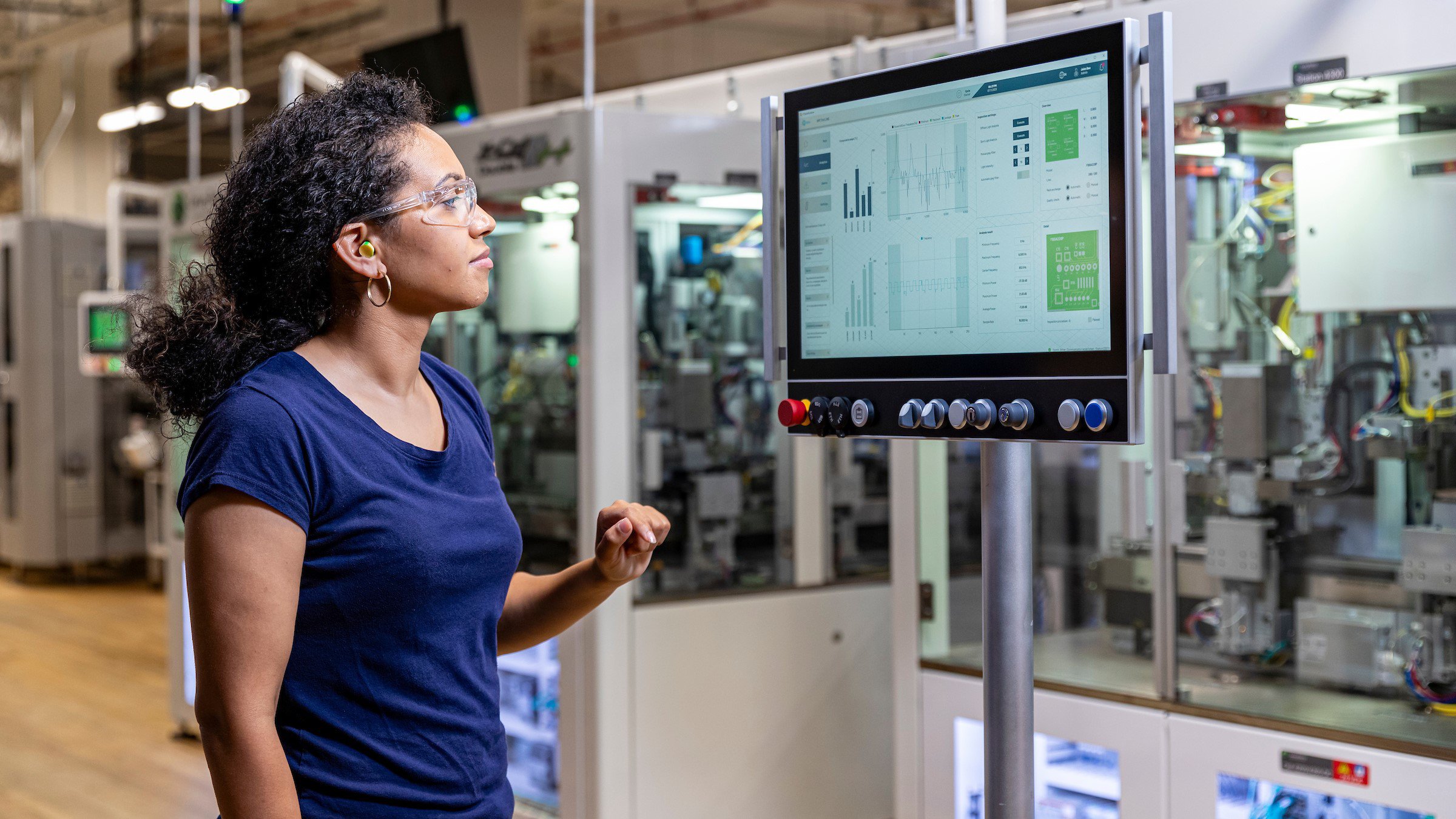Companies everywhere are looking to become more efficient and dynamic than ever before. In response, about 95% of manufacturers are using or evaluating smart manufacturing technology. (Rockwell Automation 9th Annual State of Smart Manufacturing report)
It’s common knowledge that data is key to meeting these demands, but staying competitive as the market landscape changes will require more than just gathering the data. It will also require transforming the vast quantity of data that’s being generated every day into actionable insights that drive productivity.
This means that machines must be capable of organizing, contextualizing and sharing data so that manufacturers can realize new value in their factories and bring about new levels of intelligence across their operations.
OEMs Can Now Design with Data at the Core of Their Offerings
Data is everywhere in today’s modern factories. But exactly what data is needed now, and what might be needed to succeed tomorrow, is often difficult to define. This coincides with a new and growing dynamic between OEMs and end users, where OEMs are relied on for the success of machines for extended periods of time and often are needed to take a more active role in areas such as training, advising and integration to surrounding processes.
This drives the need for OEMs to enhance their offerings so that they not only provide more data but also contextualize and egress that data so that it can be easily shared with other systems. Enter the data-ready smart machine.
What Makes a Smart Machine Data-Ready?
Designing machines using data-ready technology can help deliver a significant advancement in using operational data. These machines can organize, contextualize and make information available for egress, providing a path for users to gain new insights across production lines, facilities and fleets of equipment.
With a data at center of the design, OEMs and end users define the information required and move it beyond the equipment level - thus solving the digital transformation standoff where both parties struggle to align due to unclear data requirements and high upfront investment costs.
Now manufacturers can adapt to changing data requirements and be ready to match future demands in ways that are faster, more efficient and lower cost.
3 Value Points that You Won’t Want to Miss
This smarter design approach grants users the flexibility to introduce new enhancements, revisit designs to make adjustments, or modify applications to fit their unique needs. Nobody has to commit to decisions that can’t be changed at a later time. With the ability to structure, egress and share data with nearly any external application, data-ready smart machines help provide value through:
- Data organization and contextualization
- Decoupling and optimizing information flow
- Combining functions such as visualization, data analysis, remote access and edge Industrial Internet of Things (IIoT)
A Closer Look at Organized and Contextualized Data
OEMs must consider how data is used at the equipment level, but also how to assure that data can move beyond the machine and into end user’s digital environments. Equipment data often appears as a sizeable, and relatively flat, list of data points that provide little insight into the relevance of the information. By organizing the data into a model, individual data points can be brought together to help define their relationship to one another. This includes additional data that helps define relationships between different parts of the model, providing contextualization to what is happening across overarching processes.
It’s this organization and contextualization that begins the transformation of pure data into actionable information.
Push versus Pull: Decoupling and Optimizing the Flow of Data
Intention is critical to how data will be consumed. The choice must be made to whether there’s going to be a steady stream of data that is pulled by external applications such as supervisory control and data acquisition (SCADA) systems and Historians, or whether the data must be in a more transactional form where it is pushed at the right time from the control level to an application that is event driven.
Next, users must use a modern platform to serve up organized and contextualized data through a variety of IT-friendly protocols. By only collecting and presenting meaningful information, the process of identifying the data needed by an application becomes simplified. These optimized solutions reduce the amount of data that’s sent out significantly, leading to saved time and increased productivity.
Combined Functionality at the Machine Level
There also needs to be a modern, machine-level solution that combines visualization, data analysis, remote access and edge IIoT. The ability to move data leads to differentiated offerings that stand out in the marketplace. It’s common that potential customers don’t know the exact information they need. Through a data-ready approach, it enables them to be data flexible.
By unlocking the value that’s been previously trapped in machines, manufacturers can realize more efficiency and productivity right out of the gate.
An OEM Success Story
In the past, performance visibility was achieved by sending noncontextualized data to a local SCADA system and usually stopped there. Differences in data reporting often led to confusion on the performance of the equipment and the larger production line.
Through data-ready smart machines, performance data can be organized into information models and, with a modern platform, grant better insights at the machine level. The same information models can then deliver a more complete picture of performance at the line level or beyond.
These insights can even be made available to the OEM for them to monitor effectiveness, offer support and gain visibility across an entire fleet of equipment - all from a single source of information.
Horia Saulean, Director of Robotic Solutions at DCC Automation, a Rockwell Automation gold-level OEM Partner, has been an early adopter of this approach. “Our [end user] customers are really feeling the pain of labor shortages. They need to make informed decisions that help them achieve the highest OEE given their constraints,” he explains.
“Through implementation of data-ready solution sets in our equipment, we can give them information that supports predictive maintenance efforts and even power usage of the machines. This helps them make informed decisions about the use of their resources.”
Transformative Efficiency
Data-ready solutions are transforming the way that companies can leverage data, allowing both OEMs and end users to locate new efficiencies and elevate the value of their businesses. When data availability is decoupled from consumption, users become intentional with how they organize data and drive more efficiency with less data being moved.
Additionally, end users can now harness the power of a modern platform that combines visualization and the ability to egress data from the equipment, and can gain the flexibility needed to achieve their digital transformation goals.


